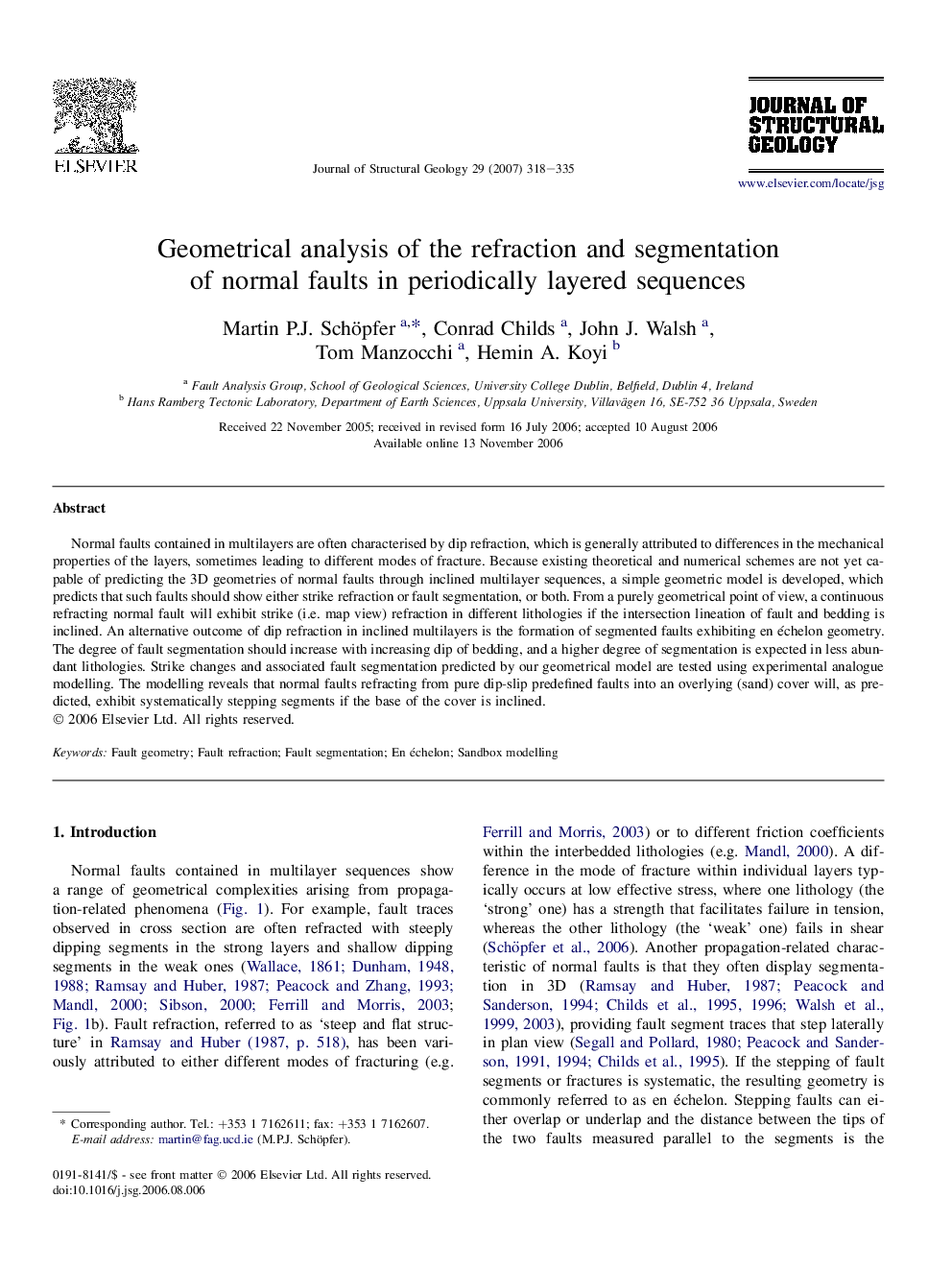| Article ID | Journal | Published Year | Pages | File Type |
|---|---|---|---|---|
| 4734229 | Journal of Structural Geology | 2007 | 18 Pages |
Normal faults contained in multilayers are often characterised by dip refraction, which is generally attributed to differences in the mechanical properties of the layers, sometimes leading to different modes of fracture. Because existing theoretical and numerical schemes are not yet capable of predicting the 3D geometries of normal faults through inclined multilayer sequences, a simple geometric model is developed, which predicts that such faults should show either strike refraction or fault segmentation, or both. From a purely geometrical point of view, a continuous refracting normal fault will exhibit strike (i.e. map view) refraction in different lithologies if the intersection lineation of fault and bedding is inclined. An alternative outcome of dip refraction in inclined multilayers is the formation of segmented faults exhibiting en échelon geometry. The degree of fault segmentation should increase with increasing dip of bedding, and a higher degree of segmentation is expected in less abundant lithologies. Strike changes and associated fault segmentation predicted by our geometrical model are tested using experimental analogue modelling. The modelling reveals that normal faults refracting from pure dip-slip predefined faults into an overlying (sand) cover will, as predicted, exhibit systematically stepping segments if the base of the cover is inclined.
